The Real Deal on Daith Piercings: What You Actually Need to Know
Alright, let’s talk about the daith piercing. In all my years as a piercer, I’ve seen piercing trends explode and then fade away, but the daith? It’s got serious staying power. Tucked into that little fold of inner cartilage, it has this cool, understated vibe that can be as subtle or as bold as you want.
In this article
- First Thing’s First: Is Your Ear Even Shaped for It?
- Let’s Talk Money: What’s This Going to Cost?
- The Migraine Question: Hope vs. Reality
- The Piercing Process: What to Expect in the Chair
- Healing: This is a Marathon, Not a Sprint
- Living With Your New Piercing: The Daily Grind
- Troubleshooting: Is it an Irritation Bump, a Keloid, or an Infection?
- Galerie d’inspiration
But because it’s so popular, there’s a ton of conflicting info out there. I get clients every week asking questions based on something they read online, and honestly, a lot of it is just not helpful. My goal here isn’t to sell you on getting one. It’s to give you the same honest conversation we’d have if you were sitting in my studio for a consultation. We’ll cover everything from anatomy to aftercare, and all the stuff in between.
First Thing’s First: Is Your Ear Even Shaped for It?
Before we even dream about cool jewelry, we have to talk about anatomy. The spot for a daith piercing is a very specific piece of cartilage called the crus of the helix. It’s that ridge that starts right over your ear canal and runs into the bowl of your ear.
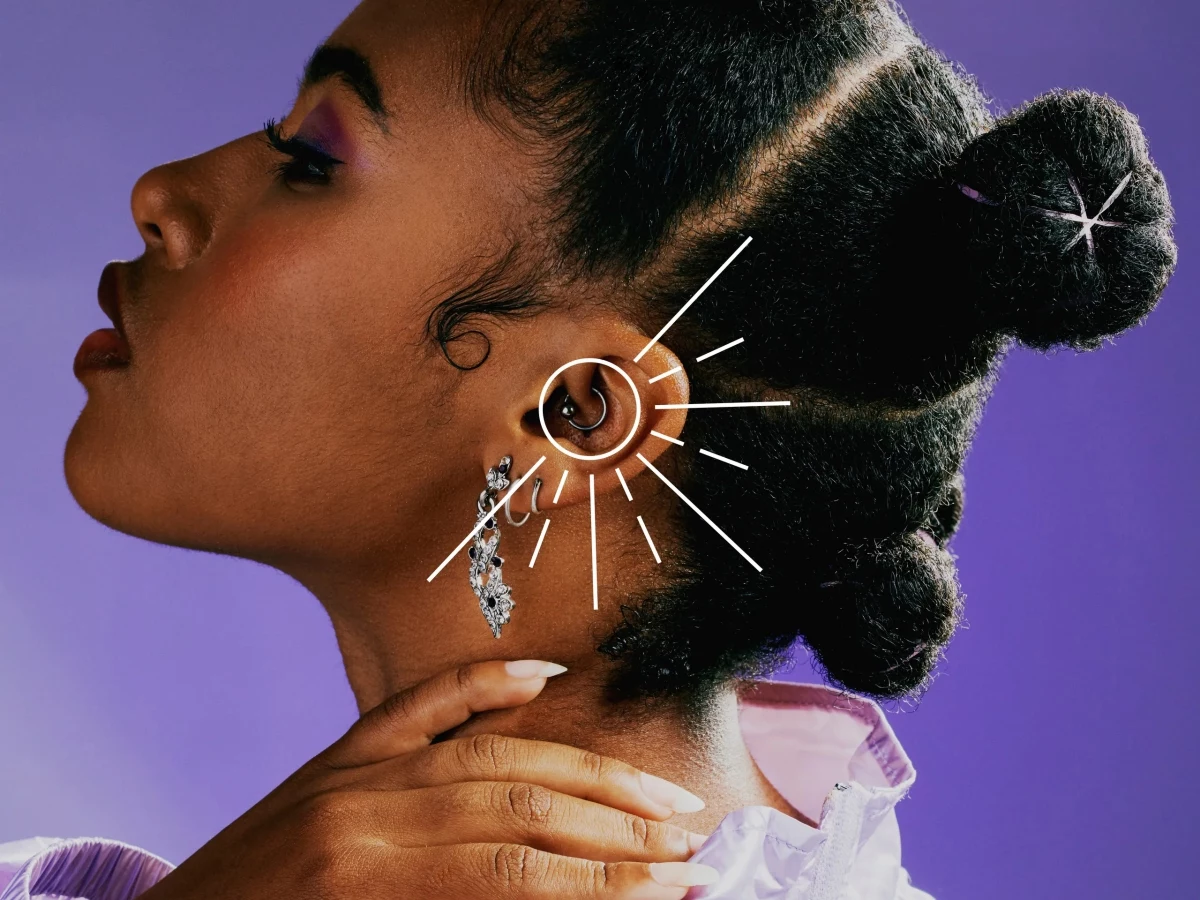
Go ahead, grab a mirror right now. See that little cartilage shelf? Gently pinch it. Does it feel like a defined, prominent ridge, or is it pretty soft and flat? A true daith piercing needs to go cleanly through this ridge, so the jewelry looks like it’s coming right out of that fold. If that ridge is too tiny or flat, a piercer simply can’t do the piercing safely. It would put too much pressure on the surrounding tissue and would probably never heal right.
Seriously, this is the most important step. I’ve had to turn people away, and while it’s a bummer, a good piercer will always choose your long-term health over making a quick buck. If a piercer doesn’t take a good, hard look at your ear anatomy, that’s a huge red flag. Walk away.
Let’s Talk Money: What’s This Going to Cost?
Okay, let’s get the budget question out of the way. The cost breaks down into two parts: the piercing service fee and the jewelry itself. They are almost always separate charges.

- The Piercing Fee: This covers the piercer’s time, expertise, and all the sterile, single-use equipment. You can expect this to be anywhere from $40 to $80, depending on the studio’s reputation and location.
- The Jewelry: This is where the price can really vary. For initial healing, you need implant-grade materials. A basic, implant-grade titanium ring will typically run you $30 to $60. If you want to start with solid 14k gold, you’re looking at a starting price of $80 to $200+, and the price goes up from there for more ornate designs.
So, all in, you should plan on spending at least $70 on the low end and potentially $250+ if you go for gold right away. And don’t forget a can of sterile saline spray for aftercare—that’s another $12 or so from any drugstore.
The Migraine Question: Hope vs. Reality
We can’t talk about daiths without touching on the whole migraine thing. The theory is that the piercing hits an acupuncture point that helps with pain. I get asked about this constantly, and my answer is always the same: get this piercing because you love how it looks. If it helps your headaches, that’s an amazing bonus, not a guarantee.
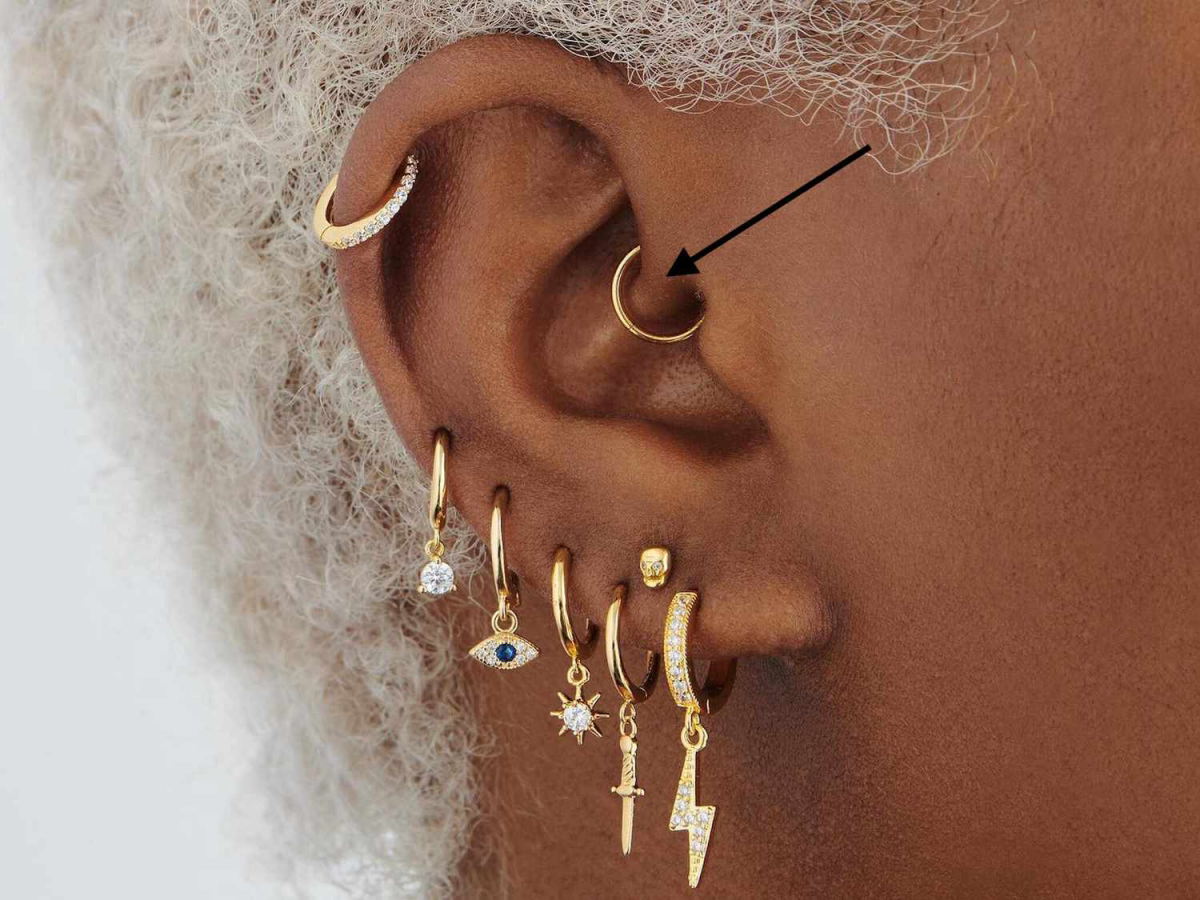
There’s just no solid medical proof it works. The stories you hear are personal anecdotes. Some people swear it changed their life; others feel no difference at all. It could even be a powerful placebo effect. As a piercer, I’m here to give you a safe, beautiful piercing. Promising a medical cure is not my job and, frankly, it’s unethical.
The Piercing Process: What to Expect in the Chair
So, your anatomy is good and you’re ready to go. The procedure itself is very precise and calm. Everything—the needle, jewelry, and any tools—is opened from a sterilized pouch right in front of you. We clean your ear thoroughly, then mark the entry and exit spots with a sterile, single-use marker. You get the final say on the placement.
What about the pain? On a scale from 1 to 10, most of my clients put it around a 4-6. You’ll feel a strong, sharp pressure for a second. It’s definitely more intense than a lobe piercing, but it’s over very fast. You’ll also likely hear a little “pop” as the needle goes through the dense cartilage. That sound is totally normal, so don’t be alarmed!
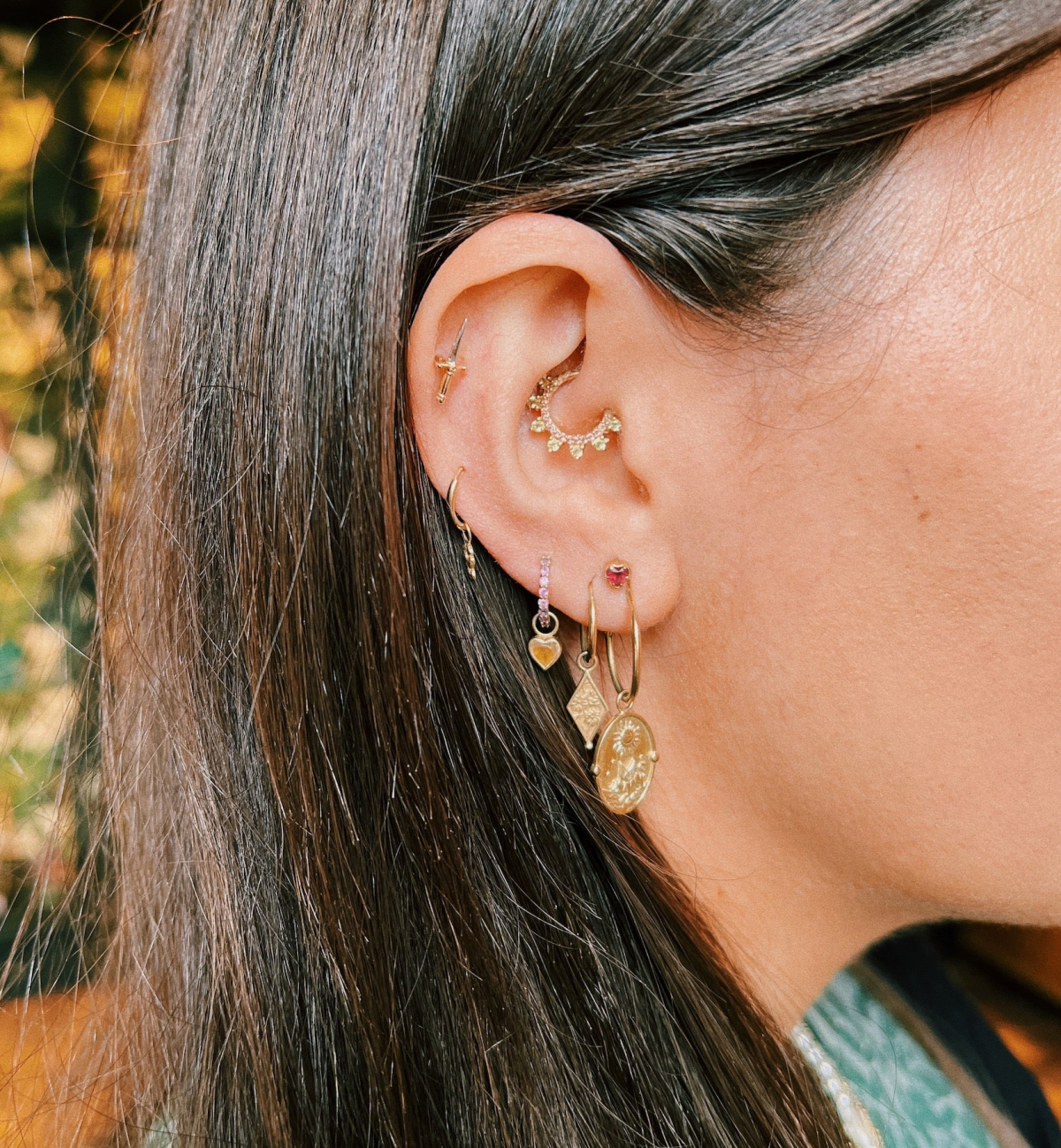
I almost always use a curved needle for a daith; it matches the shape of the cartilage and minimizes trauma. After the needle is through, the jewelry follows right behind it, we secure it, and you’re done. A little bit of bleeding is normal, and we’ll make sure it has stopped before you leave.
Healing: This is a Marathon, Not a Sprint
A daith piercing is a serious commitment. You’re looking at a healing time of 9 to 12 months, and sometimes even longer. It might look and feel fine after a few months, but the tissue on the inside is still very fragile.
Aftercare is surprisingly simple: less is more. All you need is a sterile saline wound wash in a pressurized can (it’ll just list 0.9% sodium chloride and water as ingredients). Spray it on the piercing twice a day, let it soak for a minute, then gently pat it dry with a clean paper towel or non-woven gauze. Do NOT use cotton swabs, as the fibers can get tangled.
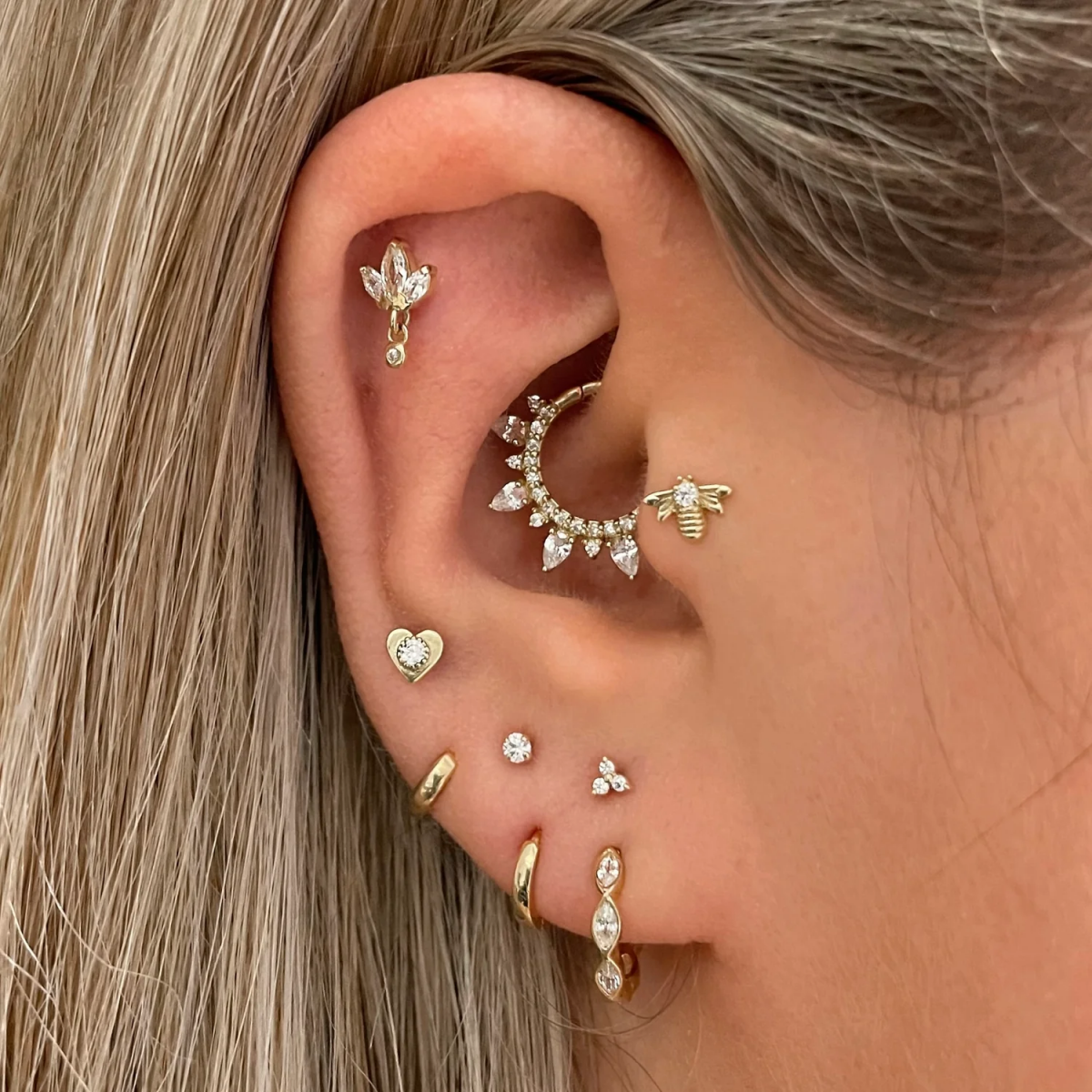
And please, avoid the harsh stuff! No rubbing alcohol, hydrogen peroxide, or antibacterial soaps. They’re way too aggressive and will only irritate your piercing. Also, no ointments—they trap moisture and bacteria.
Living With Your New Piercing: The Daily Grind
Your daily habits are HUGE for healing. The absolute biggest rule is do not sleep on it. The pressure can shift the piercing’s angle and cause nasty irritation bumps. Use a travel pillow and put your ear in the hole—it’s a game-changer.
Heads up! You won’t be able to use earbuds in that ear for the entire healing period. They press on the jewelry and introduce bacteria. Over-the-ear headphones are your only safe bet.
A few other things to watch out for:
- Glasses: Be mindful when putting on or taking off your glasses so the arms don’t snag the jewelry.
- Workouts: After a sweaty workout, it’s a good idea to do a quick saline rinse to wash away sweat and bacteria.
- Swimming: You need to avoid submerging your new piercing in bodies of water—lakes, oceans, pools, hot tubs—for at least the first few months. They are full of bacteria that can cause serious infections.
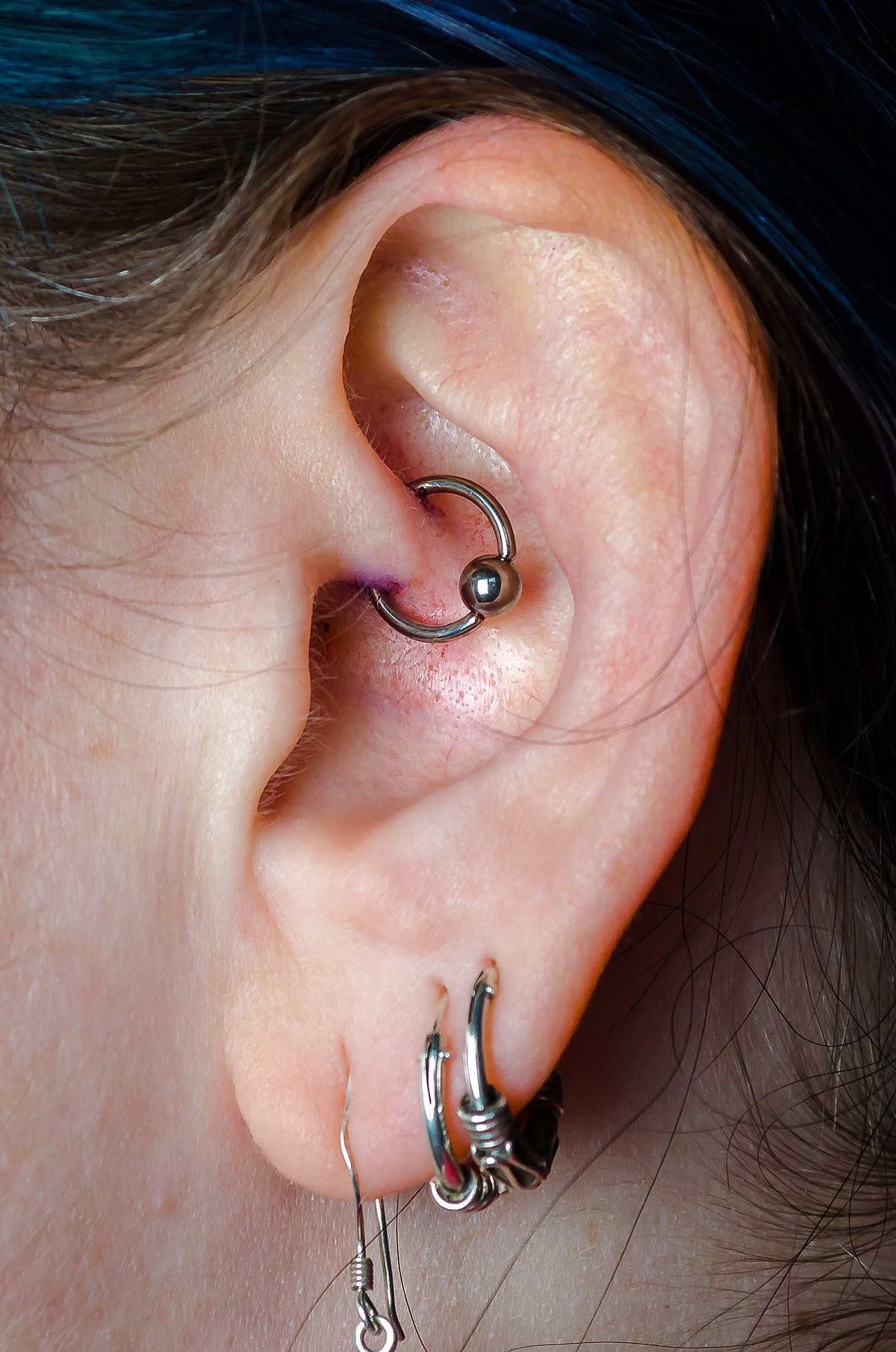
Troubleshooting: Is it an Irritation Bump, a Keloid, or an Infection?
Sooner or later, you might see a dreaded bump form. Don’t panic! Most of the time, it’s just your body telling you something’s bothering it. Here’s how to tell what’s going on.
Most likely, it’s an irritation bump. These are small, reddish bumps that pop up right next to the piercing. They’re super common and are caused by, well, irritation. The culprit is usually movement (sleeping on it, snagging it), excess moisture, or low-quality jewelry. The fix? Figure out what’s causing the irritation and stop doing it. Stick to your saline routine, and be patient.
I had one client who swore she was doing everything right, but her bump just wouldn’t quit. Turns out, she was resting her phone against her ear for work calls all day. The pressure and the dirty phone screen were the problem. Once she switched to speakerphone, the bump was gone in two weeks. It’s always the little things!
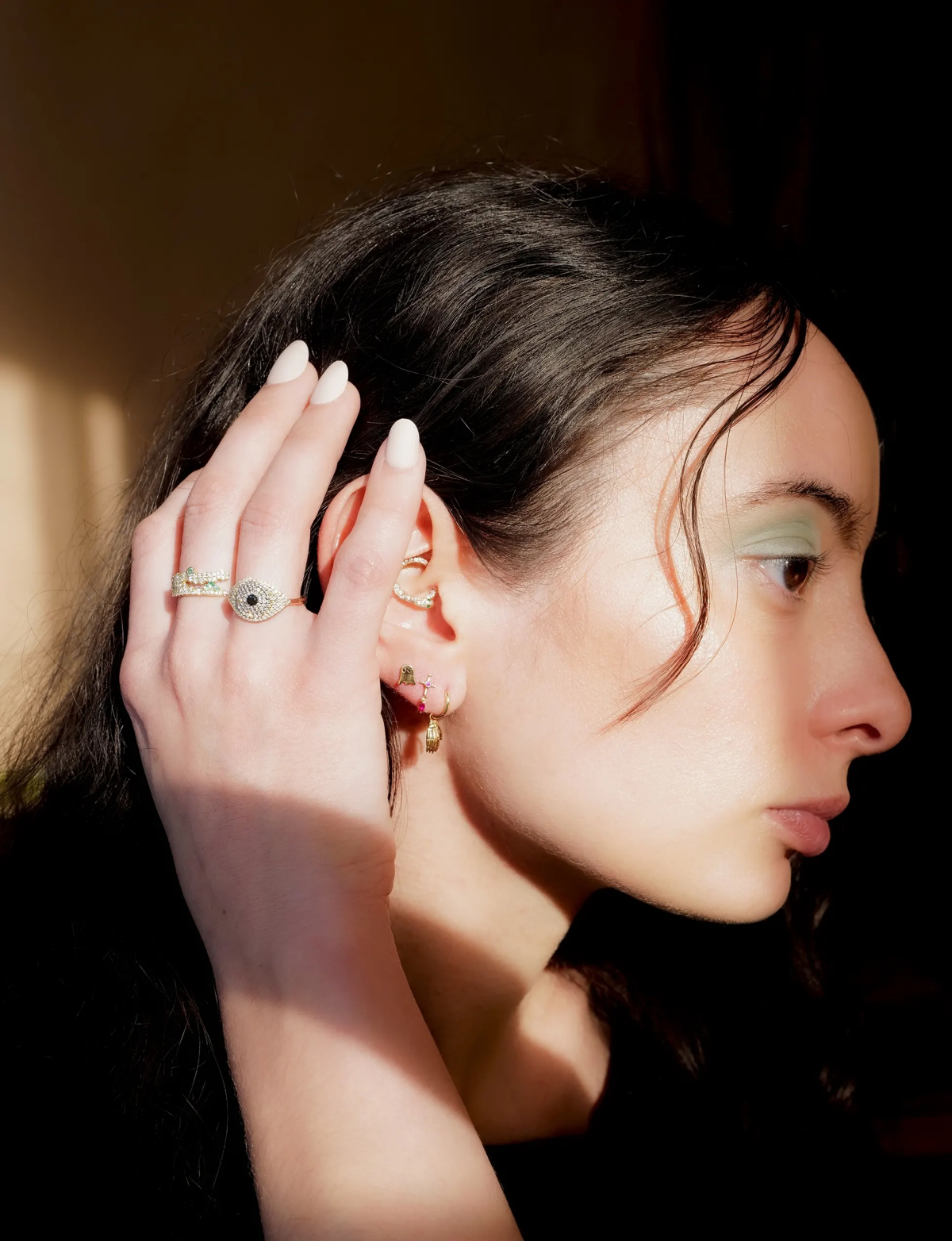
It’s probably not a keloid. Keloids are a type of excessive scarring that’s genetic and relatively rare. They grow much larger than the original wound. If you and your close relatives don’t have a history of them, it’s extremely unlikely you’ve developed one.
Know the signs of a real infection. This is when you need to see a doctor, not your piercer. A true infection involves thick, yellow or green pus, red streaks spreading from the piercing, skin that feels hot to the touch, and possibly a fever. If you have these symptoms, see a doctor right away. And don’t take the jewelry out unless they tell you to, as it can trap the infection inside.
In the end, a daith can be an incredible piercing. It just demands more patience than most. By finding a skilled professional and committing to the healing process, you’re setting yourself up for a beautiful piercing you’ll love for years.
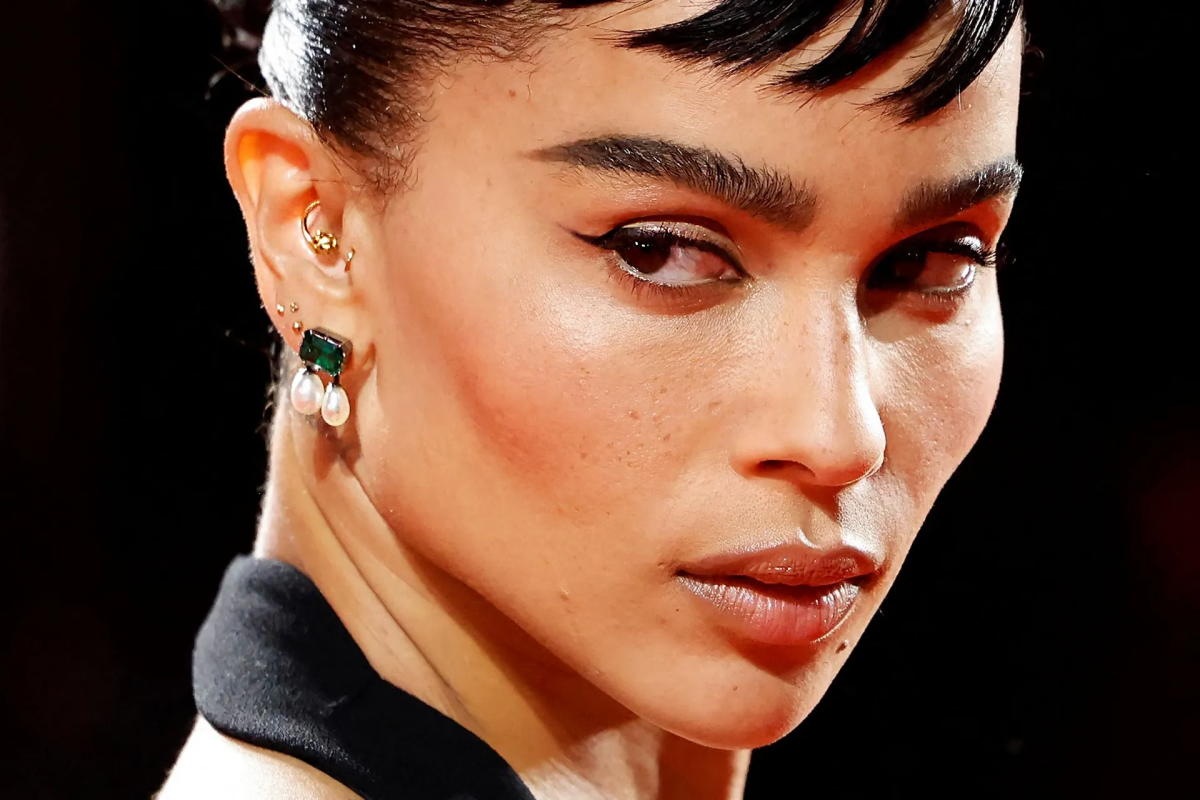
Galerie d’inspiration
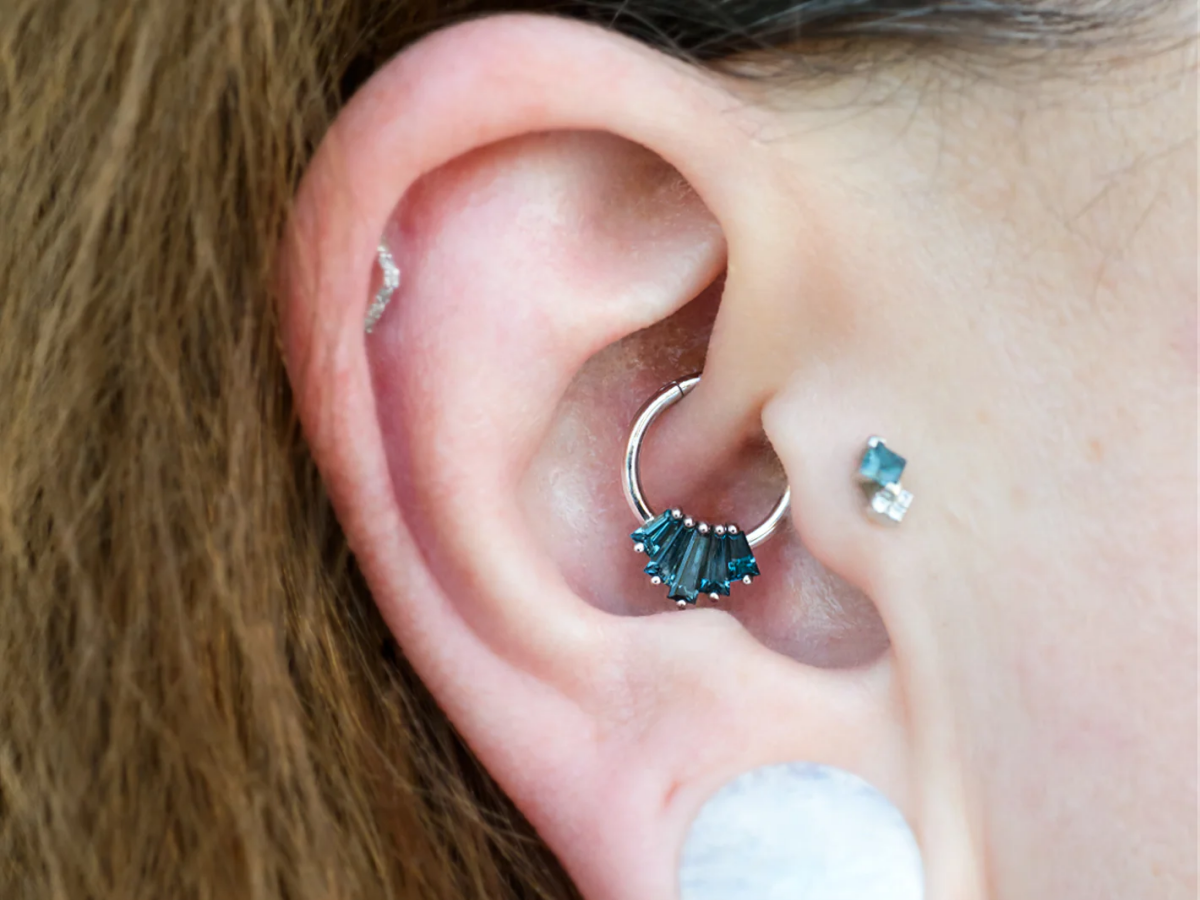
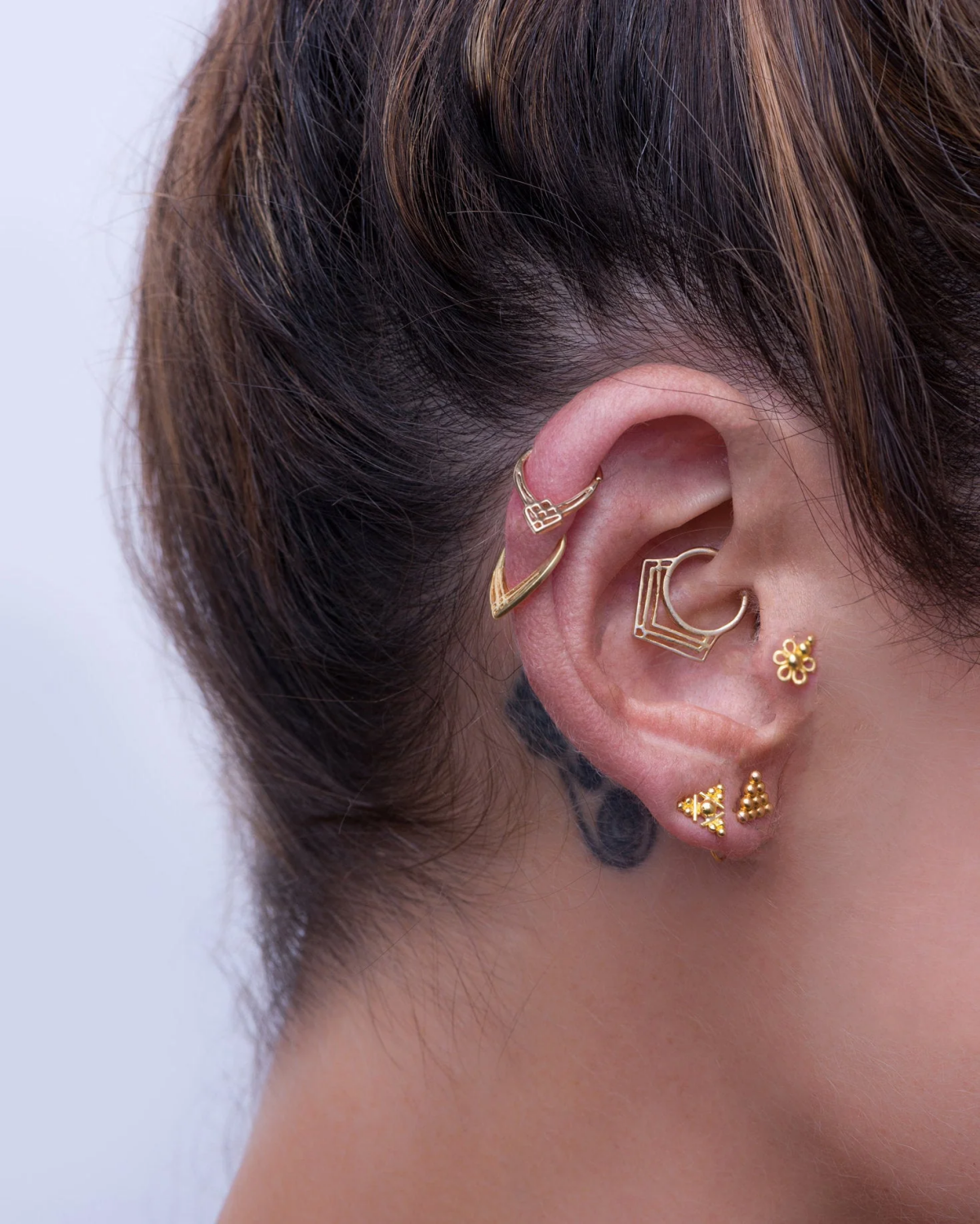
There is no scientific evidence to support the claim that daith piercings can relieve migraines.
This is the big one. While countless personal anecdotes praise the daith for migraine relief, the consensus from the American Migraine Foundation and neurologists is that any perceived benefit is likely due to the placebo effect. The piercing doesn’t target a known acupuncture or acupressure point for migraines. Think of it as a beautiful piece of jewelry first and foremost; if you happen to feel a benefit, consider it a bonus, not a guaranteed medical treatment.
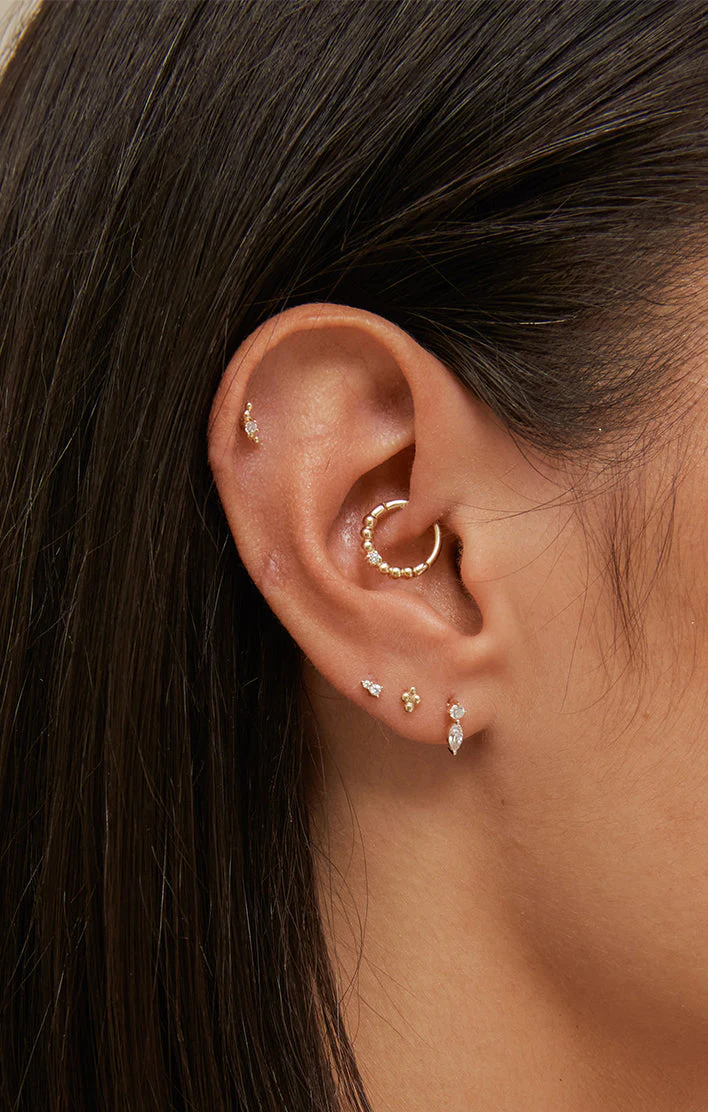
When it’s time to choose your initial jewelry, the material is non-negotiable for a healthy healing process. Your piercer will likely present two main options:
- Implant-Grade Titanium (ASTM F-136): This is the industry gold standard. It’s nickel-free, highly biocompatible, and lightweight, minimizing irritation. It’s the same material used for surgical implants.
- 14k or 18k Solid Gold: If you love the gold look, ensure it’s solid, not plated. Body-safe gold from reputable brands like BVLA or Anatometal is specifically alloyed to be nickel-free and biocompatible.
The one to avoid? Vague
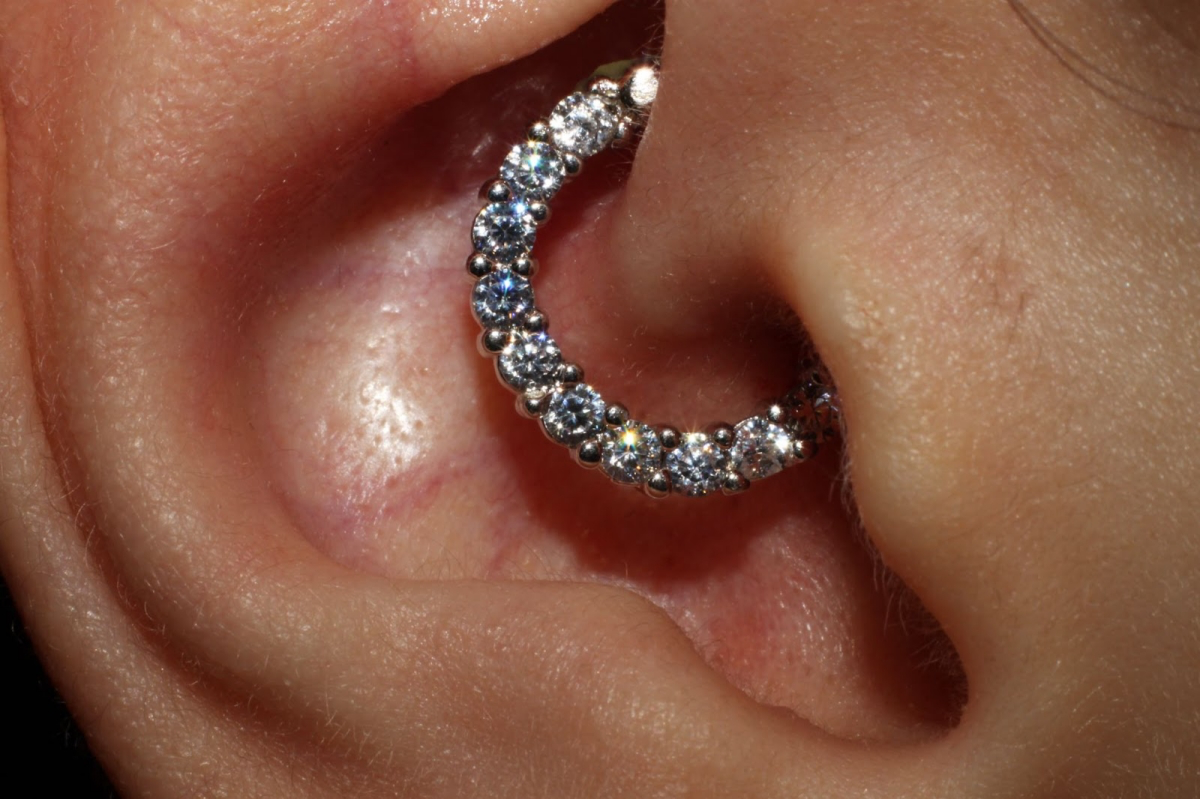
The biggest mistake we see: Over-cleaning and using harsh products. Your body is doing the hard work of healing; your job is just to keep the area clean without causing irritation. Ditch the alcohol, hydrogen peroxide, and antibacterial soaps. A simple, sterile saline spray, like NeilMed Piercing Aftercare, once or twice a day is all you need. Let the solution flow over the piercing, then gently pat the area dry with non-woven gauze. That’s it. Less is more.
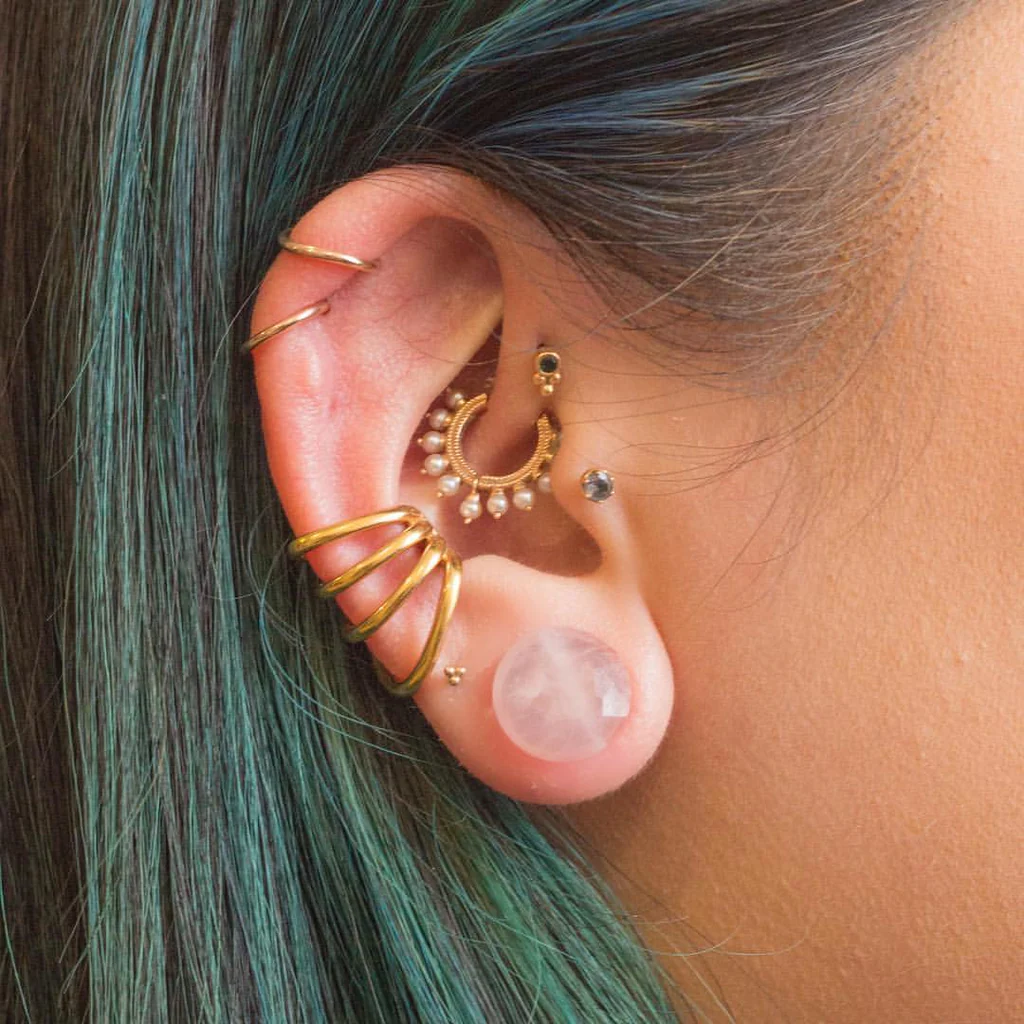
Help! A dreaded bump has appeared on my new daith piercing. Is it infected?
Take a breath. While you should always consult your piercer if you’re concerned, that little bump is most likely an irritation bump, not a dreaded keloid. These are common with cartilage piercings and are usually caused by something specific: sleeping on it, accidentally snagging it, using low-quality jewelry, or over-cleaning. The solution is patience. Identify and remove the source of irritation, stick to your simple saline cleaning routine, and give it time. The bump should slowly subside as the irritation goes away.
A well-healed daith piercing is like a permanent art installation in your ear. The jewelry choice sets the tone for your entire










